In the late nineteenth century, scores of American artists from small towns and large cities alike ventured to Europe, particularly to Paris, to study at the feet of Europe’s great teachers at academies such as Julian, Colarossi and the School of Beaux Arts. When they returned, they chose to relocate in a number of emerging artists colonies; some located in the East in and around New York and Boston, and others located in the newly emerging West. Many chose the West because of the intensity of its light, the diversity of its topography and a belief that open spaces meant more freedom to be creative and room to be different. Colonies sprung up in and around Puget Sound, Portland, the Bay Area, the Monterey Bay, Santa Barbara, Los Angeles, Laguna Beach and La Jolla.
Land’s End, located in Laguna Beach, California, was constructed in 1930 and is a great example of an artist’s cottage of that period. Located in a heavily wooded canyon with streams running nearby, its three distinct rooms and single bathroom have changed little since the early days. The current owner’s lineage is steeped in American history. As a result, he has remained steadfast in his desire to maintain the single-wall structure in a way that would be recognizable to its original owners.
Viewed from the street, the cottage sits on the crest of a gradual up-slope. Its white picket fence and abundance of roses provide a vivid border to the greenery surrounding the cottage and the brown shingles of the structure itself. The original siding has been maintained and oiled throughout the home’s life and allows the whiteness of the push-out windows to make a dramatic design statement. The river-rock fireplace is original and lends great textural contrast to the shingled walls. Most unique is the roof’s edge, which has been given a “thatched” appearance with the use of shaped shingles. The curb appeal of Land’s End is both simple and dramatic.
Entering the living room through a heavy plank door adorned with stained glass, guests are immediately impressed with the interior’s classic arrangement. Occupying one wall is a rugged stone fireplace—a must for those chilly and foggy nights. The living room is lighted by a simple yet tasteful chandelier. A redwood alcove contrasts sharply with the cream interior. Within the alcove sits a late-eighteenth-century still life and a collection of early-twentieth-century adventures by Zane Grey. Facing the alcove is an Old Hickory Three Hoop chair draped with a brown-and-red-striped Beacon blanket from 1940.
The bookcases contain original trade blankets from the 1930s and ’40s, and the owner relaxes each evening in the Old Hickory Grove Park chair and ottoman. Antique floor lamps with mica shades custom designed by West End Light of Benecia, California, light the corners of the intimate living room while the small dining room table is perfectly positioned with a view of the woods. The owner is a football fan, and when friends come over, they draw straws to determine who will claim the 1930s French leather sofa—that is, unless Cool, the owner’s black Labrador is already there. “When it comes to Cool and that sofa, Cool always gets first dibs,” says the owner.
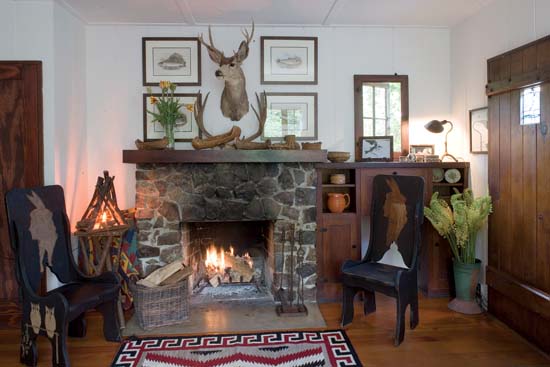
Late-nineteenth-century ceremonial lodge chairs, pyrographically etched with deer and owls, sit on each side of the rustic stone fireplace. The teepee lamp is from the 1920s and came from a roadside inn in upstate New York. The plank front door is original to the cottage.
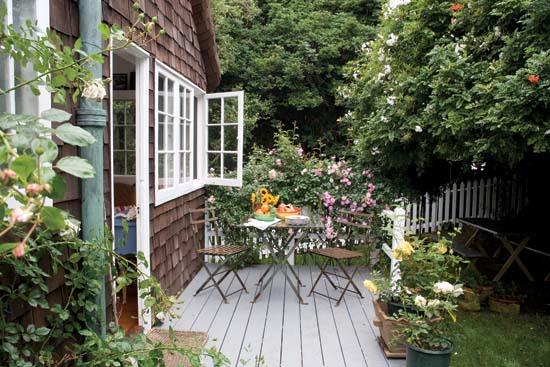
A simple deck provides a perfect wooded setting for an early weekend breakfast with friends.
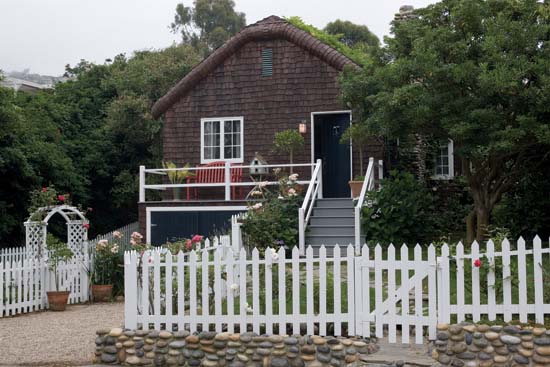
Front view of Land’s End and its uniquely pitched roof reminiscent of the English countryside.
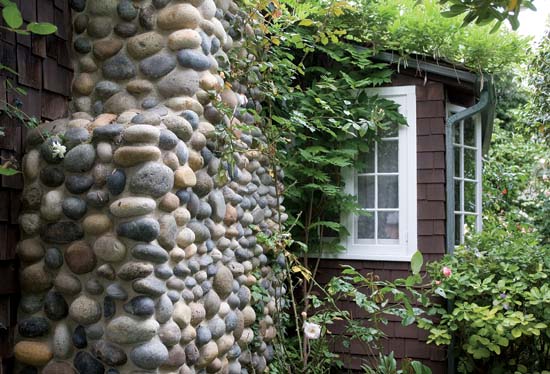
The river rock chimney anchors the cottage.
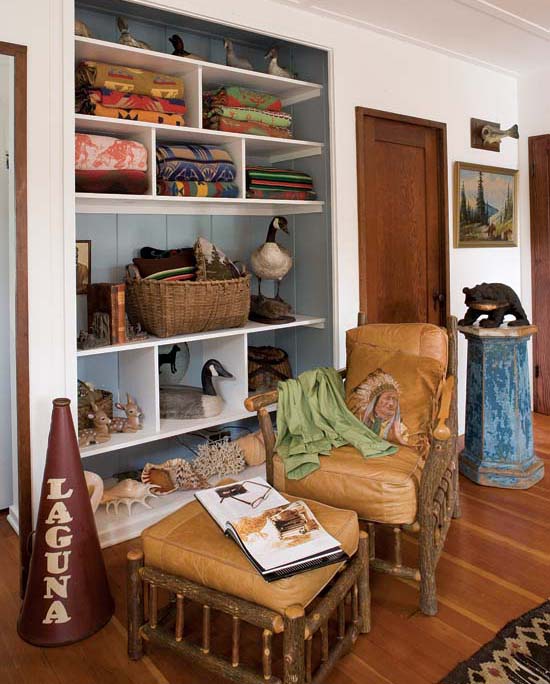
The Old Hickory leather chair and ottoman sit adjacent bookshelves filled with 1930s camp blankets, decoys and various collectibles.
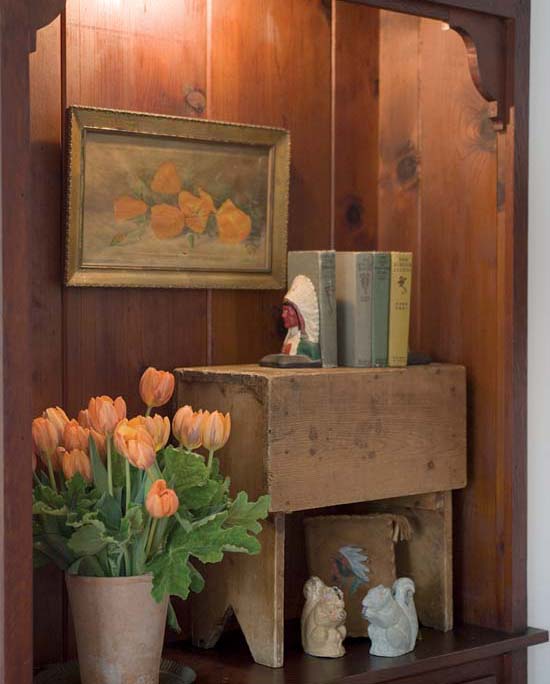
A vase of flowers and collectibles add to the charming setting.
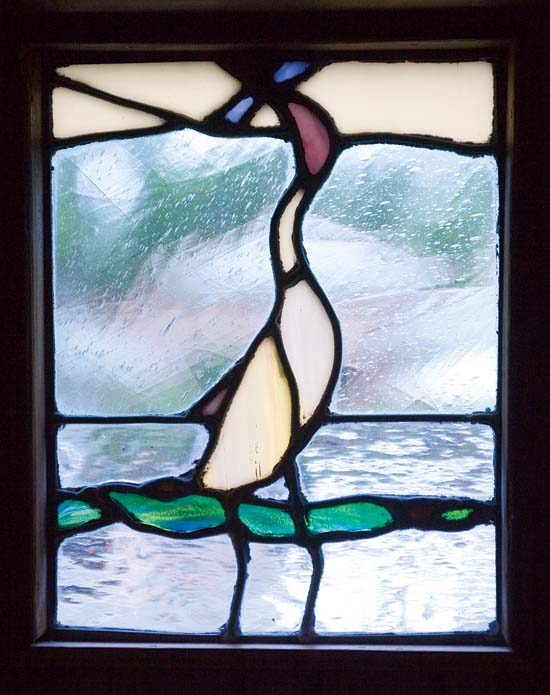
A vintage leaded-glass pane in the front door.
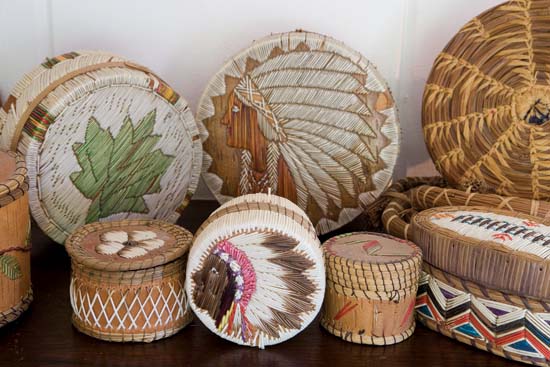
Vintage porcupine quill baskets from eastern Canada.

The upgraded galley kitchen leads to a small dining nook and out to the deck, where family and guests may ponder the next “Big Catch.”
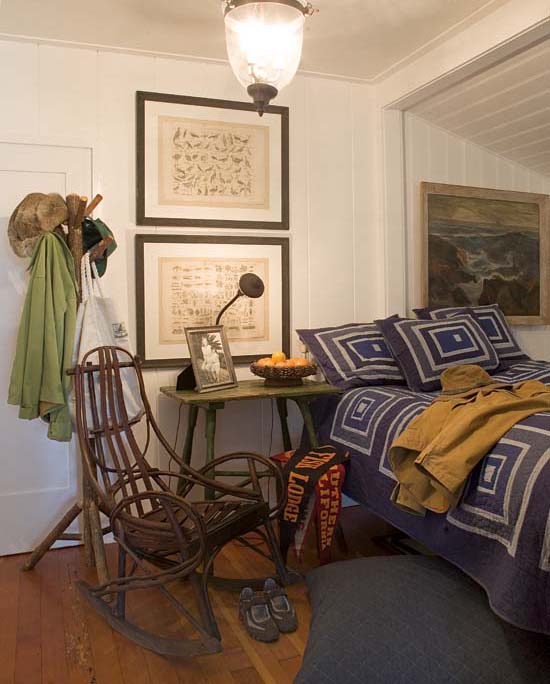
A Denyse Schmidt quilt outfits the bed under framed antique prints. A vintage bentwood rocker sits near the bed and some vintage banners from the owner’s alma mater.
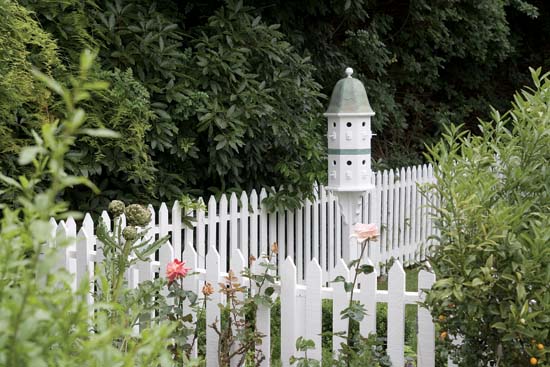
A birdhouse for eight makes Land’s End very inviting.

Cool, the owner’s young Labrador, attentively awaits the arrival of dinner guests on the front porch.
“When it comes to Cool and that sofa, Cool always gets first dibs.”